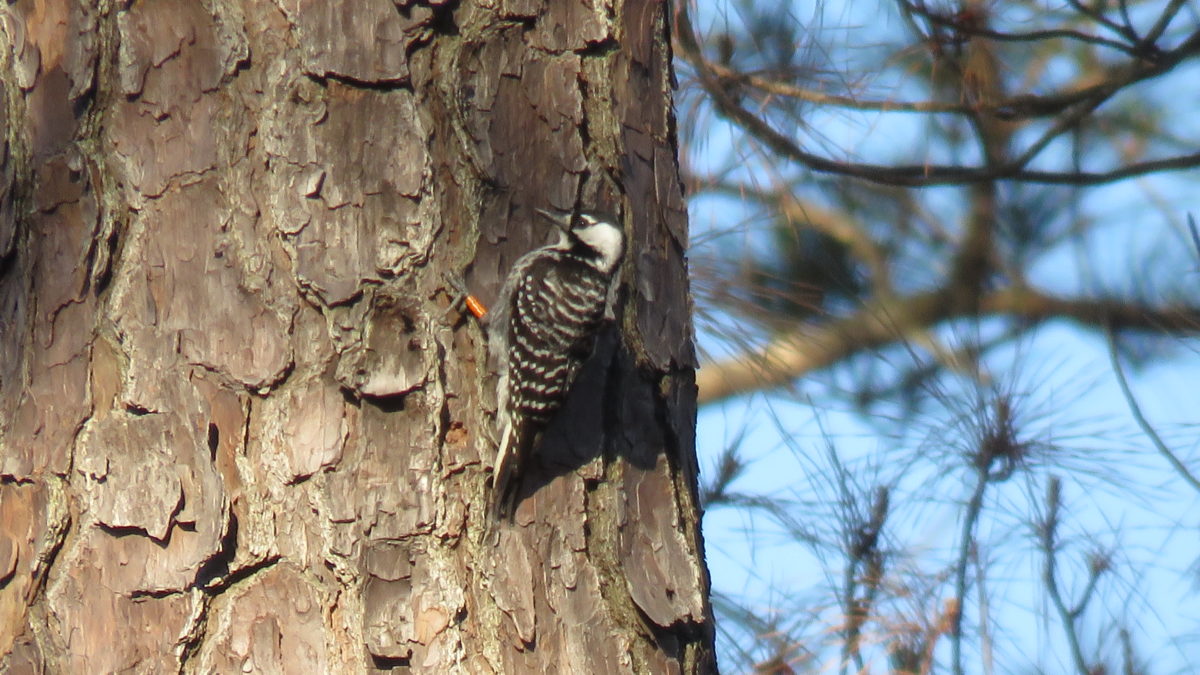Red-Cockaded Woodpeckers at Peak Population Size in Virginia

From penthouse view to penthouse view
July 11, 2022
Chasing Black Rails
October 6, 2022By Chance Hines
9/30/2022
The red-cockaded woodpecker has been classified as endangered since 1970 by the United States Fish and Wildlife Service and Virginia supports the northern-most population of the species. The future looked especially bleak for Virginia’s red-cockaded woodpecker population during the early 2000s when only two breeding groups remained in the state. At that time, The Nature Conservancy purchased more than 2,700 acres nestled within rural Sussex County where the remaining birds resided hoping that dedicated habitat management would save the last of the species in Virginia.
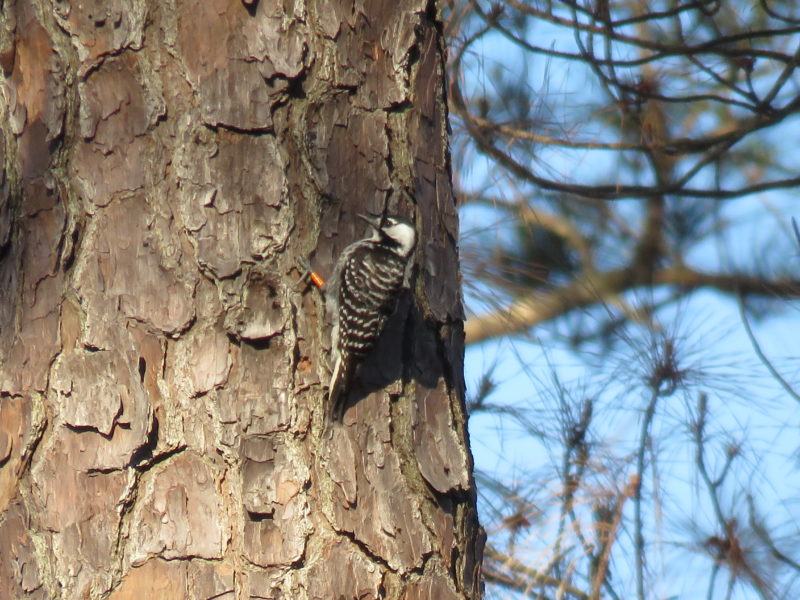
This species has a very narrow range of habitat requirements including tall mature pine trees, in which the species excavates cavities, and a relatively open mid and understory. Habitat management is labor intensive and includes mechanical removal of hardwood trees as well as regular treatments of prescribed fire to maintain the open understory and stimulate insect abundance. Not only is the habitat difficult to create and maintain but a bevy of other species, known as cavity kleptoparasites, can displace woodpeckers from cavities they painstakingly excavate through living pines. Red-cockaded woodpeckers create sap wells on their cavity trees in an effort to exclude these kleptoparasites but this is not always effective.
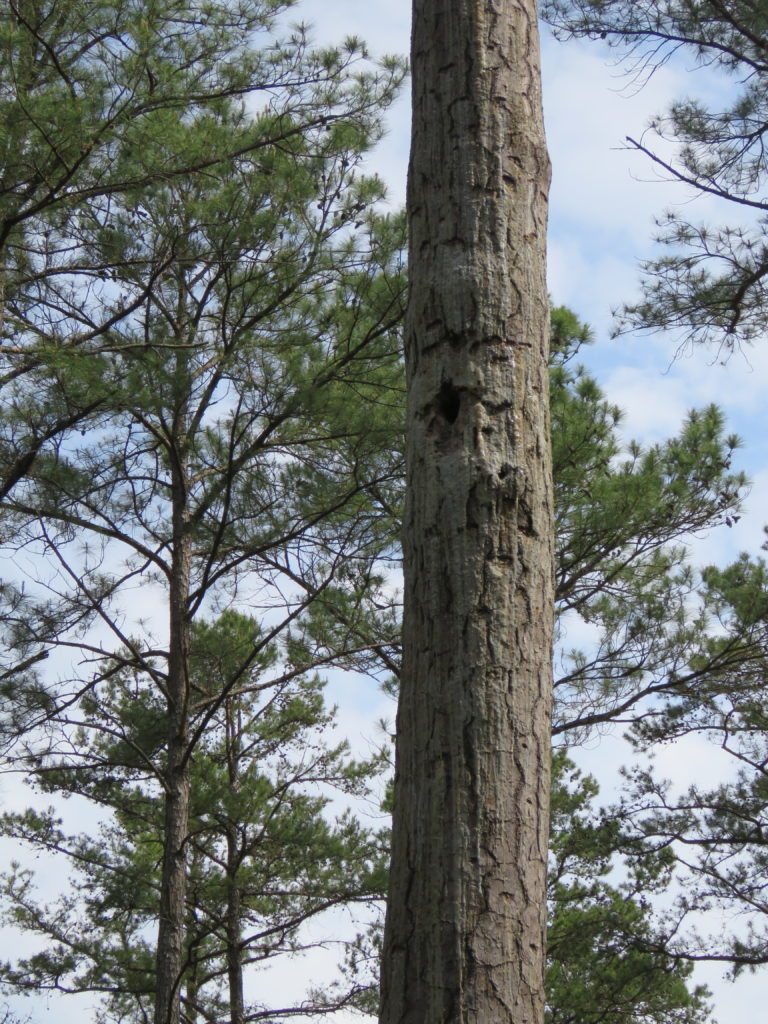
Years of hard work by many biologists and land managers from United States Fish and Wildlife Service, Virginia Department of Wildlife Resources, The Nature Conservancy, and The Center for Conservation Biology have resulted in a resounding success. The population, which at one time consisted of two breeding pairs at Piney Grove, has grown to 15 breeding groups. The increase in breeding pairs has resulted in a corresponding increase in production as 32 young fledged during the 2022 breeding season, tying the all-time high at Piney Grove Preserve set in 2021.
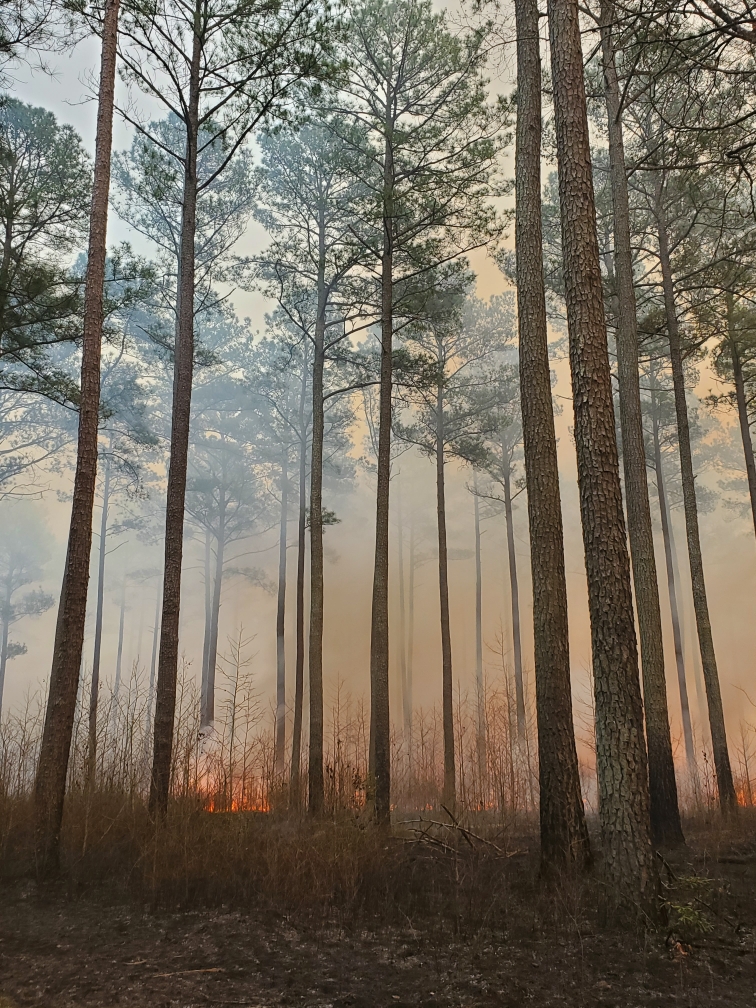
The population at Piney grove Preserve has done so well that a handful of intrepid birds have ventured into the surrounding forests and colonized a patch of the Big Wood Wildlife Management Area. The birds at Big Woods have limited success as the trees are younger than those found in Piney Grove and cavity kleptoparasites are more abundant. Despite this, the lone breeding group continues to produce eggs and even fledged young in 2019.
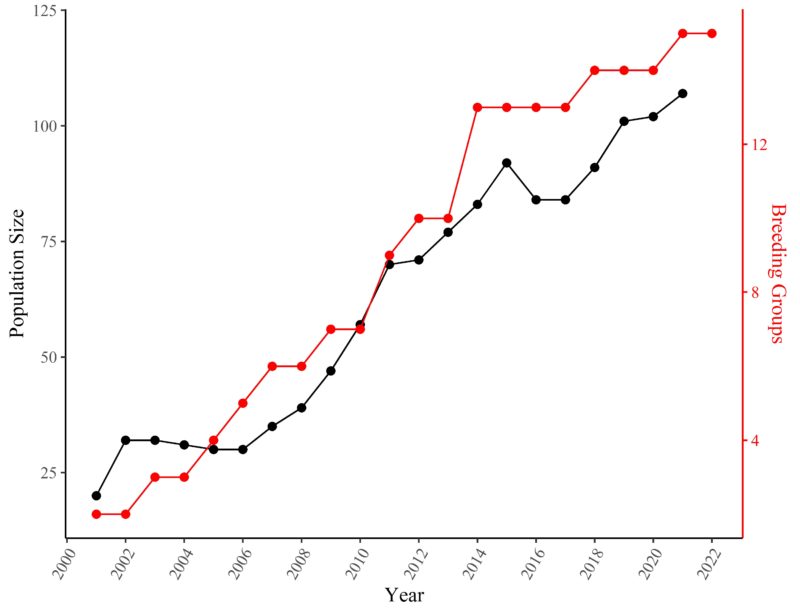
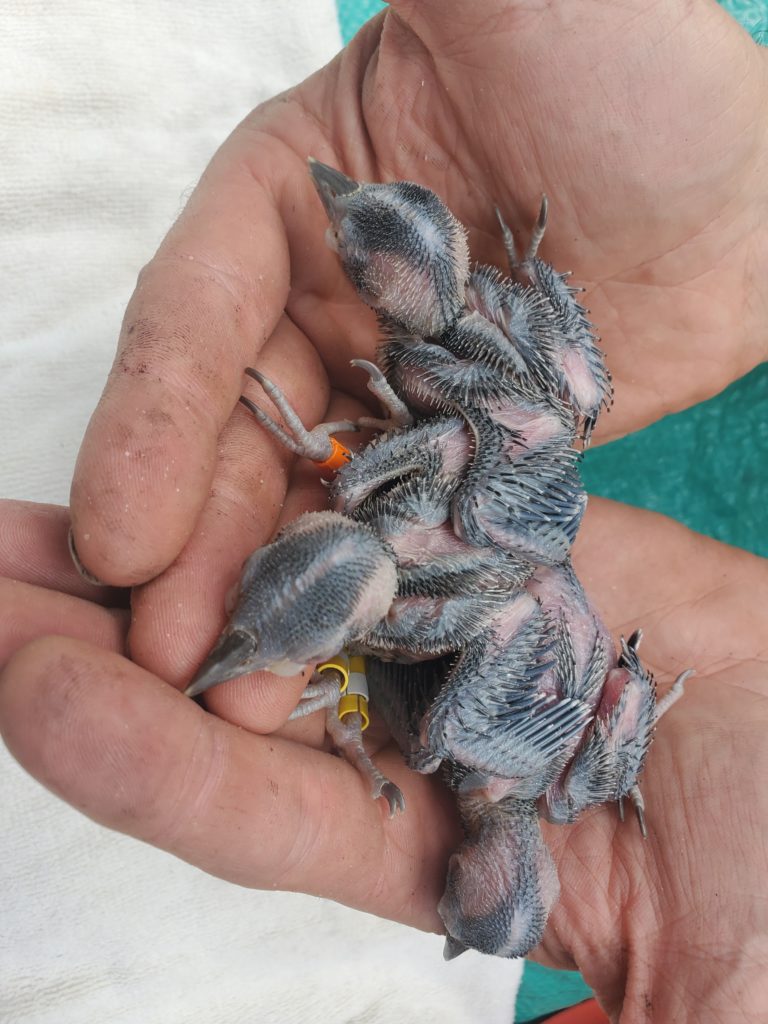
The management success that has occurred at Piney Grove Preserve is not unique. Throughout the species remaining range, many populations are increasing in number. This population growth has resulted in a proposed federal rule that would downlist the species from endangered to threatened. The downlisting of this species serves as a testament to the time and hard work groups in Virginia, as well as groups throughout the rest of the species range, have invested.

